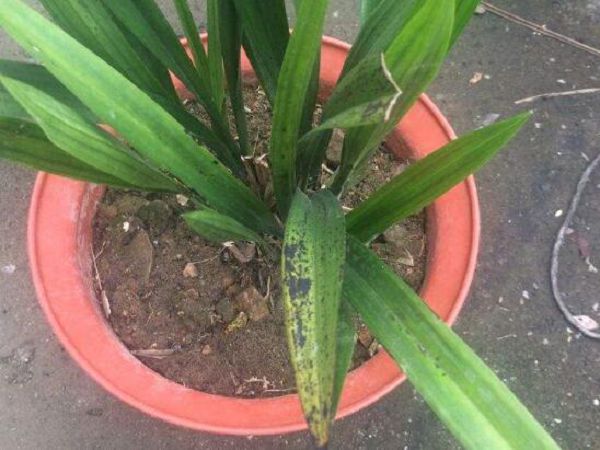What if the orchid leaves have black spots? there are three ways to make the orchid green and white.

With its elegant appearance and lofty artistic conception, the orchid is the noblest flower in the hearts of many writers and writers. But many flower friends find that the leaves of orchids have black spots when they raise orchids. How to do with black spots on orchid leaves? In fact, the black spots on the leaves of orchids are mostly due to anthrax, which requires timely spraying of insecticides to get rid of insects, and we should also pay attention to putting them in a ventilated environment to reduce watering.
What about the dark spots on the leaves of orchids
Orchid is a very delicate flower, in the maintenance must pay attention to the breeding environment, otherwise the orchid will easily produce anthrax. The symptom of anthrax is black spots on the leaves. If you don't pay attention, the disease will wither or even die. Let's take a look at how to solve it.
1. Proper ventilation
The biggest reason for orchids suffering from anthrax is that the plant environment is too bad, many people do not know what to do with black spots on orchid leaves, in fact, orchids like semi-shady environment, the right amount of light will make the plant grow more brilliant.
2. Spraying
When the leaves of orchids have black spots, we have to spray chemicals on the plants. If it is not serious, it can be sprayed with carbendazim. If it is serious, it should be mixed with methyl topiramate. After dilution, spray the whole orchid. On average, once every 15-20 days, after 2 times, the plant will return to health.
3. Seaweed as plant material
Orchid peanut delicate, if there is a black spot, spray solution must find some moss algae to do orchid plant material, spread on the orchid pot soil. In this way, the nutrition and water retention of orchid soil have been controlled. However, after using seaweed as plant material, we must reduce the amount of water, otherwise the water retention of seaweed will make the plant too much water and destroy the roots of orchids.
Orchids are very delicate. If you want to cultivate them well, the growth environment is very important. You must let them grow in a cool and ventilated environment. Especially the light, need the right amount of shelter, the best astigmatism culture in summer, with a shading net to cover 70% of the light. No matter what season it is, keep the orchid in the sun for no more than 4 hours a day.
2. Appropriate watering
The most important thing for breeding orchids is watering. Only by watering the orchids properly, the orchids will be elegant in color, the leaves will be green, and there are no dark spots. There is no fixed number of days for orchids to be watered. When watering, water thoroughly at one time. Wait until the soil is dry, and then water it again. Do not water it when the soil is still wet.
3. Pruning in time
Orchids always have big and small problems when they grow, which will lead to some dry and yellowing leaves in the plants. The weak leaves that remain on the plant, the yellowing leaves have to be cut off. Only in this way can we initially ensure the nutrition of orchid plants, and then reduce the harm of orchid leaves yellowing, and there will not be leaves with long black spots.
4. Spraying Duling bacteria
Anthracnose of orchids often occurs in the plum rain season, so in order to effectively prevent orchid leaves from growing black spots, we need to spray Duling bacteria to protect plants in advance when we breed, preferably before the arrival of the plum rain season. Spray Duling solution once every 15 days, after 3 times, it will make the plant resistant to anthracnose.
Related
- Is the orchid suitable for indoor use? Is it good for the body?
- How to prevent the empty root of orchids?
- What to do after the crab claw orchid is withered?
- Why are the leaves of orchids always yellow? Fertilizing and watering.
- Can the root of the gentleman orchid be saved if it is rotten?
- Diagnosis and treatment of cotton-blowing beetle insects in Cymbidium
- There is a way for a gentleman's orchid to rot.
- What is the most suitable temperature and humidity for the orchid?
- How to raise a gentleman's orchid? Cultivation techniques of Cymbidium
- How to prepare the nutritive soil for the cultivation of Cymbidium


